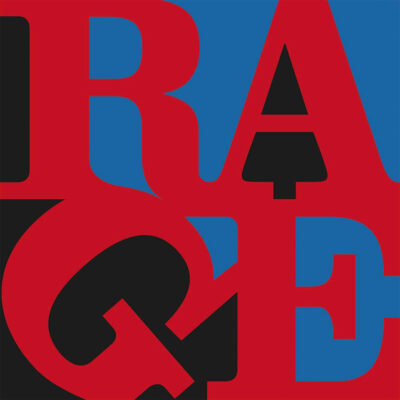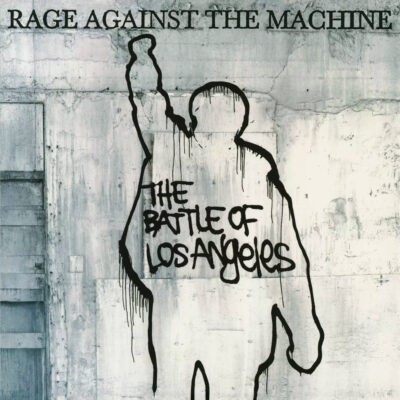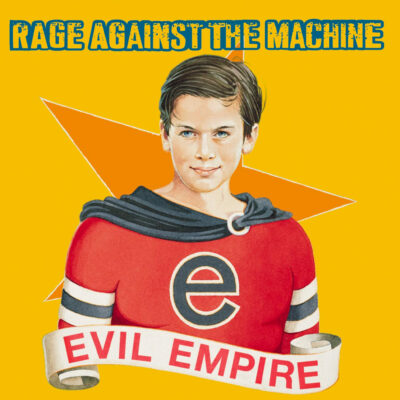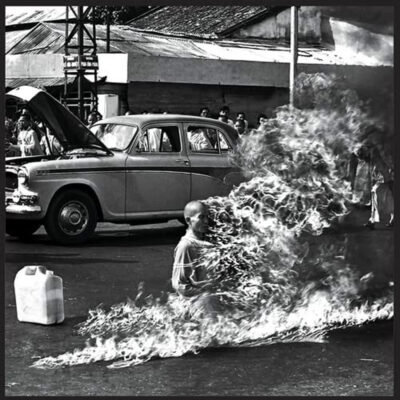The late 90s and early aughts were a rough time for rock. Unfortunately, in our haste to flush nu-metal and post-grunge buttrock down the cultural toilet like the turds they were, we also discarded some of the only good heavy music from that era. For nearly a decade thereafter, it was “uncool” to still listen to bands like the Deftones, System of a Down, and, perhaps most maligned of all, Rage Against the Machine.
However, Rage has been reappraised in recent years as people slowly realized that there are more important things in life than keeping a laundry list of which bands have or have not “sold out.” Musically, their sound clearly influenced current acts like Turnstile and MSPAINT. Politically, their message inspired a generation of anti-authoritarian leftists. And, most importantly, they have the best song on the 1998 “Godzilla” soundtrack.
Although they’ve reunited for tours over the years, RATM’s studio albums were all released in a brief 8-year window. How do their records stack up against one another? Well, chug that Mountain Dew Code Red and tell your stepdad to fuck off, because it’s time for us to rank ‘em.
4. Renegades (2000)
 “Renegades” has to go last, right? I am fond of this collection of off-the-wall covers, as Rage branched out musically to take on the likes of Eric B. and Rakim (sure), Minor Threat (yup), and Devo (wait, what?). You could always hear varied funk, punk, and hip-hop influences incorporated in Rage’s music, but “Renegades” is the furthest they ever leaned away from riff-heavy rap/rock to dip into those other genres. Some tracks are pretty forgettable (“Kick Out the Jams” is just a lesser version of the original, “Street Fighting Man” whiffs), but most of the album delivers, including standouts like “Microphone Fiend,” “The Ghost of Tom Joad,” and “How I Could Just Kill a Man.”
“Renegades” has to go last, right? I am fond of this collection of off-the-wall covers, as Rage branched out musically to take on the likes of Eric B. and Rakim (sure), Minor Threat (yup), and Devo (wait, what?). You could always hear varied funk, punk, and hip-hop influences incorporated in Rage’s music, but “Renegades” is the furthest they ever leaned away from riff-heavy rap/rock to dip into those other genres. Some tracks are pretty forgettable (“Kick Out the Jams” is just a lesser version of the original, “Street Fighting Man” whiffs), but most of the album delivers, including standouts like “Microphone Fiend,” “The Ghost of Tom Joad,” and “How I Could Just Kill a Man.”
Play it again: “Maggie’s Farm”
Skip it: “Street Fighting Man”
3. The Battle of Los Angeles (1999)
 Released when I was 12, “The Battle of Los Angeles” was my introduction to Rage. Buoyed by massive radio hits “Guerrilla Radio,” “Testify,” and “Sleep Now in the Fire,” the first half of the album is as KROQ-ready as their debut. The second half is full of B-sides in which de la Rocha’s insightful, literary verses serve as the fuse that lights Morello’s monumental riffs and eccentric solos (“Maria,” “New Millenium Homes,” and “Ashes in the Fall”). I love this album, which features some of the band’s biggest and best songs, but I have it third because there’s an element of familiarity. If the first album originated Rage’s sound and the second album evolved it, this one serves as a refinement of what came before. But it still rips.
Released when I was 12, “The Battle of Los Angeles” was my introduction to Rage. Buoyed by massive radio hits “Guerrilla Radio,” “Testify,” and “Sleep Now in the Fire,” the first half of the album is as KROQ-ready as their debut. The second half is full of B-sides in which de la Rocha’s insightful, literary verses serve as the fuse that lights Morello’s monumental riffs and eccentric solos (“Maria,” “New Millenium Homes,” and “Ashes in the Fall”). I love this album, which features some of the band’s biggest and best songs, but I have it third because there’s an element of familiarity. If the first album originated Rage’s sound and the second album evolved it, this one serves as a refinement of what came before. But it still rips.
Play it again: “Guerilla Radio”
Skip it: “Born as Ghosts”
2. Evil Empire (1996)
 RATM returned from the unexpected success of their debut with a classic second album attitude: “Evil Empire” is tighter and darker than its more enthusiastically pissed-off predecessor. Although it features one of their biggest hits (“Bulls on Parade”), the rest of the album is less radio-friendly (albeit still plenty accessible to the target audience of rebellious 7th graders who just learned about the concept of out-of-school suspension). Instead of simple anthemic refrains like “Fuck you, I won’t do what ya tell me!” Zack’s rallying cries on “Evil Empire” are cryptic, almost nightmarish (on “Tire Me,” he yelps, “I wanna be Jackie Onassis/I wanna wear a pair of dark sunglasses/I wanna be Jackie O/Oh, oh, oh, oh please don’t die!”). The album closes with my vote for most underrated RATM song, “Year of Tha Boomerang,” a groove-heavy track torn apart by a furious hardcore breakdown.
RATM returned from the unexpected success of their debut with a classic second album attitude: “Evil Empire” is tighter and darker than its more enthusiastically pissed-off predecessor. Although it features one of their biggest hits (“Bulls on Parade”), the rest of the album is less radio-friendly (albeit still plenty accessible to the target audience of rebellious 7th graders who just learned about the concept of out-of-school suspension). Instead of simple anthemic refrains like “Fuck you, I won’t do what ya tell me!” Zack’s rallying cries on “Evil Empire” are cryptic, almost nightmarish (on “Tire Me,” he yelps, “I wanna be Jackie Onassis/I wanna wear a pair of dark sunglasses/I wanna be Jackie O/Oh, oh, oh, oh please don’t die!”). The album closes with my vote for most underrated RATM song, “Year of Tha Boomerang,” a groove-heavy track torn apart by a furious hardcore breakdown.
Play it again: “Year of Tha Boomerang”
Skip it: None (All killer, no filler: the biggest virtue of “Evil Empire” is a dark cohesive synergy unifying each track)
1. Self-Titled (1992)
 Ranking a band’s albums in reverse chronological order is classic old-guy nostalgia pandering, but it’s also accurate in this case. You’ve gotta admire the confidence Rage had right out of the gate: Using a famous photograph of a monk lighting himself on fire for your debut album cover is, among other things, pretty brash. Like, I bet Weezer wasn’t sitting around debating whether to use pictures of Vietnam War napalm attacks as the Blue Album cover art. Though I love the entirety of their succinct discography, RATM’s self-titled ranks first. From the bombast of opener “Bombtrack,” to the angsty rebellion of “Killing in the Name,” to the funky breakdown of “Bullet in the Head,” Rage was already conceptually focused and sonically dynamic on this album released just one year after their formation. Garth Richardson’s production is stellar, perfectly capturing each guttural growl, towering riff, and radical bassline.
Ranking a band’s albums in reverse chronological order is classic old-guy nostalgia pandering, but it’s also accurate in this case. You’ve gotta admire the confidence Rage had right out of the gate: Using a famous photograph of a monk lighting himself on fire for your debut album cover is, among other things, pretty brash. Like, I bet Weezer wasn’t sitting around debating whether to use pictures of Vietnam War napalm attacks as the Blue Album cover art. Though I love the entirety of their succinct discography, RATM’s self-titled ranks first. From the bombast of opener “Bombtrack,” to the angsty rebellion of “Killing in the Name,” to the funky breakdown of “Bullet in the Head,” Rage was already conceptually focused and sonically dynamic on this album released just one year after their formation. Garth Richardson’s production is stellar, perfectly capturing each guttural growl, towering riff, and radical bassline.
Play it again: Aside from the better-known A-sides, let’s give a nod to the underrated “Township Rebellion”
Skip it: “Settle for Nothing” (I bet even Paul Ryan skips this song on chest day)

